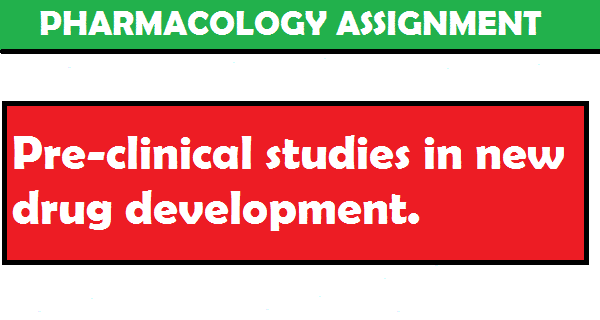Introduction
Toxicity studies play a crucial role in assessing the potential adverse effects of chemical substances, pharmaceuticals, cosmetics, pesticides, food additives, and other agents on living organisms, including humans. These studies aim to evaluate the dose-response relationship, identify target organs or systems affected by exposure, and determine the mechanisms underlying toxicity. The introduction of toxicity studies typically outlines the purpose, methods, and significance of the research.
Purpose: The primary objective of toxicity studies is to assess the safety of substances and products that may come into contact with humans, animals, or the environment. These studies help regulatory agencies, such as the Food and Drug Administration (FDA) in the United States or the European Medicines Agency (EMA) in Europe, make informed decisions regarding product approval, labeling, and usage guidelines. Additionally, toxicity studies contribute to scientific understanding of the biological effects of various compounds and aid in the development of safer alternatives.
Methods: Toxicity studies employ a variety of experimental techniques and models to assess different aspects of toxicity, including acute toxicity, subacute toxicity, chronic toxicity, carcinogenicity, mutagenicity, reproductive toxicity, and developmental toxicity. Commonly used methods include:
- Animal Studies: Rodents (e.g., rats, mice) and non-rodents (e.g., rabbits, dogs) are frequently used in toxicity studies due to their physiological similarities to humans. These studies involve administering test substances at varying doses and durations to observe their effects on different organ systems.
- In Vitro Studies: Cell culture techniques allow researchers to investigate the toxic effects of substances on specific cell types or tissues in a controlled laboratory setting. In vitro studies are often used for initial screening and mechanistic studies.
- Epidemiological Studies: These studies analyze human populations to identify associations between exposure to certain substances and adverse health outcomes. Epidemiological data provide valuable insights into long-term health effects and help guide public health policies.
- Computational Toxicology: Computational models and bioinformatics tools are increasingly used to predict toxicity based on chemical structure, molecular interactions, and biological pathways. These approaches accelerate toxicity assessment and reduce reliance on animal testing.
Significance: Toxicity studies are essential for protecting human health and the environment by identifying potential hazards and guiding risk management strategies. Regulatory agencies use toxicity data to establish safe exposure limits, develop guidelines for product labeling and handling, and enforce regulatory standards. Moreover, toxicity studies contribute to scientific knowledge by advancing our understanding of toxicological mechanisms and facilitating the development of safer chemicals and products.
Types of Toxicology Studies
Toxicology studies encompass a range of methodologies and approaches to assess the potential adverse effects of chemical substances on living organisms. These studies are crucial for understanding the toxicity profile of substances and for making informed decisions regarding their safe use. Here are the primary types of toxicology studies:
- Acute Toxicity Studies:
- Aim: Acute toxicity studies determine the adverse effects of a single or short-term exposure to a substance within a relatively short period, usually 24 to 48 hours.
- Methods: These studies typically involve administering increasing doses of the test substance to experimental animals (often rodents) and observing mortality, clinical signs, and changes in organ function.
- Endpoints: The median lethal dose (LD50) is often used as a measure of acute toxicity, representing the dose at which 50% of the test animals die.
- Subacute Toxicity Studies:
- Aim: Subacute toxicity studies assess the adverse effects of repeated exposure to a substance over several weeks (usually 28 to 90 days).
- Methods: Animals receive daily doses of the test substance, and various parameters such as clinical signs, body weight changes, organ weights, and histopathological examinations are evaluated.
- Endpoints: These studies provide information on target organ toxicity and help establish dose levels for further long-term studies.
- Chronic Toxicity Studies:
- Aim: Chronic toxicity studies investigate the adverse effects of prolonged exposure to a substance over a significant portion of the lifespan of the test animals (often 6 months to 2 years).
- Methods: Animals are exposed to the test substance daily for an extended duration, and comprehensive evaluations of clinical signs, organ function, pathology, and carcinogenic potential are conducted.
- Endpoints: Chronic toxicity studies provide critical data for assessing the long-term health risks associated with exposure to the substance.
- Carcinogenicity Studies:
- Aim: Carcinogenicity studies assess the potential of a substance to induce cancer in experimental animals.
- Methods: Animals are exposed to varying doses of the test substance for a prolonged period, and tumors are monitored and characterized.
- Endpoints: These studies help determine the carcinogenic potential of the substance and its relevance to human health risk assessment.
- Reproductive and Developmental Toxicity Studies:
- Aim: Reproductive and developmental toxicity studies evaluate the effects of a substance on fertility, pregnancy, embryonic development, and offspring viability.
- Methods: Animals are exposed to the test substance during specific reproductive stages, and parameters such as mating behavior, fertility, gestation length, litter size, and developmental abnormalities are assessed.
- Endpoints: These studies provide insights into potential reproductive hazards and developmental defects associated with exposure to the substance.
- Genetic Toxicity Studies:
- Aim: Genetic toxicity studies assess the ability of a substance to induce mutations or chromosomal damage in cells.
- Methods: Various in vitro and in vivo assays, such as the Ames test, micronucleus assay, and comet assay, are used to evaluate genotoxicity.
- Endpoints: These studies help identify potential mutagens and carcinogens and provide essential data for risk assessment and regulatory decision-making.
You May Like: Introduction to Allergy Testing
Each type of toxicology study serves a specific purpose in characterizing the safety profile of substances and informing risk assessment and regulatory decisions. Together, they contribute to ensuring the protection of human health and the environment from potential hazards posed by chemical agents.
Conclusion
In conclusion, toxicology studies are indispensable tools for assessing the safety of chemical substances and products and for safeguarding human health and the environment. Through a diverse array of methodologies and approaches, these studies enable researchers and regulatory agencies to comprehensively evaluate the potential adverse effects of substances and make informed decisions regarding their use, handling, and regulation.
From acute toxicity studies, which provide insights into the immediate effects of single or short-term exposures, to chronic toxicity and carcinogenicity studies, which investigate the long-term health risks associated with prolonged exposure and potential carcinogenic properties, each type of toxicological assessment serves a critical role in understanding the hazards posed by substances.
Furthermore, reproductive and developmental toxicity studies shed light on the impact of substances on fertility, pregnancy, and offspring viability, while genetic toxicity studies identify potential mutagens and carcinogens by assessing their effects on DNA integrity and chromosomal stability.
The findings from toxicology studies not only inform regulatory decisions and risk management strategies but also contribute to scientific knowledge by advancing our understanding of toxicological mechanisms and facilitating the development of safer alternatives.

